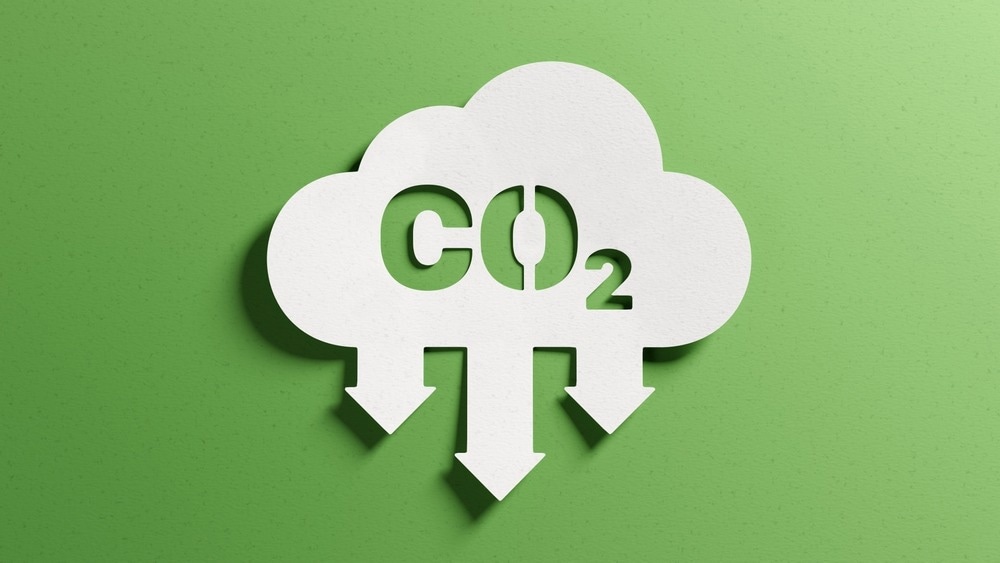Technologies for carbon dioxide removal (CDR), which could be vital in the fight against climate change, have advanced in step with other technological advancements throughout the past century. Nevertheless, to fulfill policy targets meant to curb global warming, these technologies need to advance more quickly, according to recent research led by Gregory Nemet, a professor at the University of Wisconsin–Madison.

Image Credit: NicoElNino/Shutterstock.com
A question that remains unanswered is whether climate technology is evolving and growing fast enough to meet the requirements of the Paris Agreement as policymakers, researchers, and climate activists from all around the world get ready for the UN Climate Change Conference, which kicks off on November 30th, 2023.
Nemet, a professor at the La Follette School of Public Affairs, is the leader of new research that reveals new CDR techniques must scale significantly more quickly to achieve the Paris Agreement’s temperature target of keeping warming to 2 or 1.5 degrees Celsius.
To achieve that objective over the course of a century, hundreds of gigatons of carbon dioxide would need to be removed from the atmosphere, which is why scaling new CDR technologies is so crucial.
CO2 must be extracted from the atmosphere and stored in several ways for CDR to work. Reforestation, wetland restoration, and better forest management are a few examples of traditional CDR. Novel CDR refers to all other CDR techniques, which have only been used on a limited scale.
Examples include direct air carbon capture and storage, biochar, and bioenergy with carbon capture and sequestration. Compared to traditional techniques that rely on soil and trees, these new approaches might be able to provide better long-lasting carbon storage.
Nemet and his research team present the Historical Adoption of TeCHnology (HATCH) dataset in a recent paper that was published October 30, 2023, in Communications, Earth & Environment. HATCH is a novel project that tracks and analyzes a range of consumer, industrial, and agricultural technologies that have been adopted over the past century and can offer insight into the scale-up of new technologies like carbon removal.
In the early 20th century, 148 technologies were examined in 11 categories for their development and emergence. Then, it cross-referenced this data with CDR targets in policy announcements, industry announcements of CDR scale-up plans, and model CDR scenarios developed by the Intergovernmental Panel on Climate Change (IPCC).
Company declarations and government targets suggested there would be substantially quicker growth than the historical record and IPCC CDR predicted scenarios, even though the report found evidence that the required scale-up of carbon removal technology fits within the historical range of past efforts.
The scale-up rates needed for carbon removal to meet the 2- and 1.5-degree Celsius targets are within the range of historical experience, even if at the high end. We can learn from that experience to facilitate getting carbon removal to climate-relevant scale over the next three decades.
Gregory Nemet, Professor, University of Wisconsin–Madison
Nemet and his research team report in another publication published in Joule on November 15th, 2023, that the amount of carbon dioxide removed annually is currently two gigatons. Just 0.1% of that elimination comes via new CDR; the majority is achieved by planting more trees.
All of this is true even if modeling scenarios indicate that to comply with the Paris Agreement and maintain the long-term health of our planet, hundreds of gigatons of carbon dioxide must be removed from the atmosphere over the course of the century.
According to the study, practically all scenarios that restrict warming to 1.5 or 2 degrees Celsius necessitate innovative CDR. By mid-century, scenarios have increased innovative CDR by a factor of 1,300 on average.
The study argues that this stage of the process for direct air carbon capture and storage and other novel CDR methods needs to accelerate to meet the demands of a warming planet.
This stage is defined as the formative phase, and it looks at the time between a technology’s introduction to the market and when rapid scale-up of its production occurs. Accelerating innovation in this stage to start producing at a bigger volume earlier could facilitate better acceptance of technologies.
“To become climate-relevant, the formative phases for air filter systems and other novel methods of carbon removal need to be at least as active as the fastest historical analogs. This will require more serious commitments toward novel removal technologies than are currently in place. The required levels will only be feasible if we see substantial development of novel CDR’s formative phase in the next 15 years.”
The findings of these investigations will also be featured in the next UN Emissions Gap Report for 2023, which has a chapter on carbon removal to which Minx and Nemet have contributed.
Journal References:
Nemet, G., et al. (2023) Dataset on the adoption of historical technologies informs the scale-up of emerging carbon dioxide removal measures. Communications Earth & Environment. doi:10.1038/s43247-023-01056-1.
Nemet, G. F., et al. (2023) Near-term deployment of novel carbon removal to facilitate longer-term deployment. Joule. doi:10.1016/j.joule.2023.11.001.